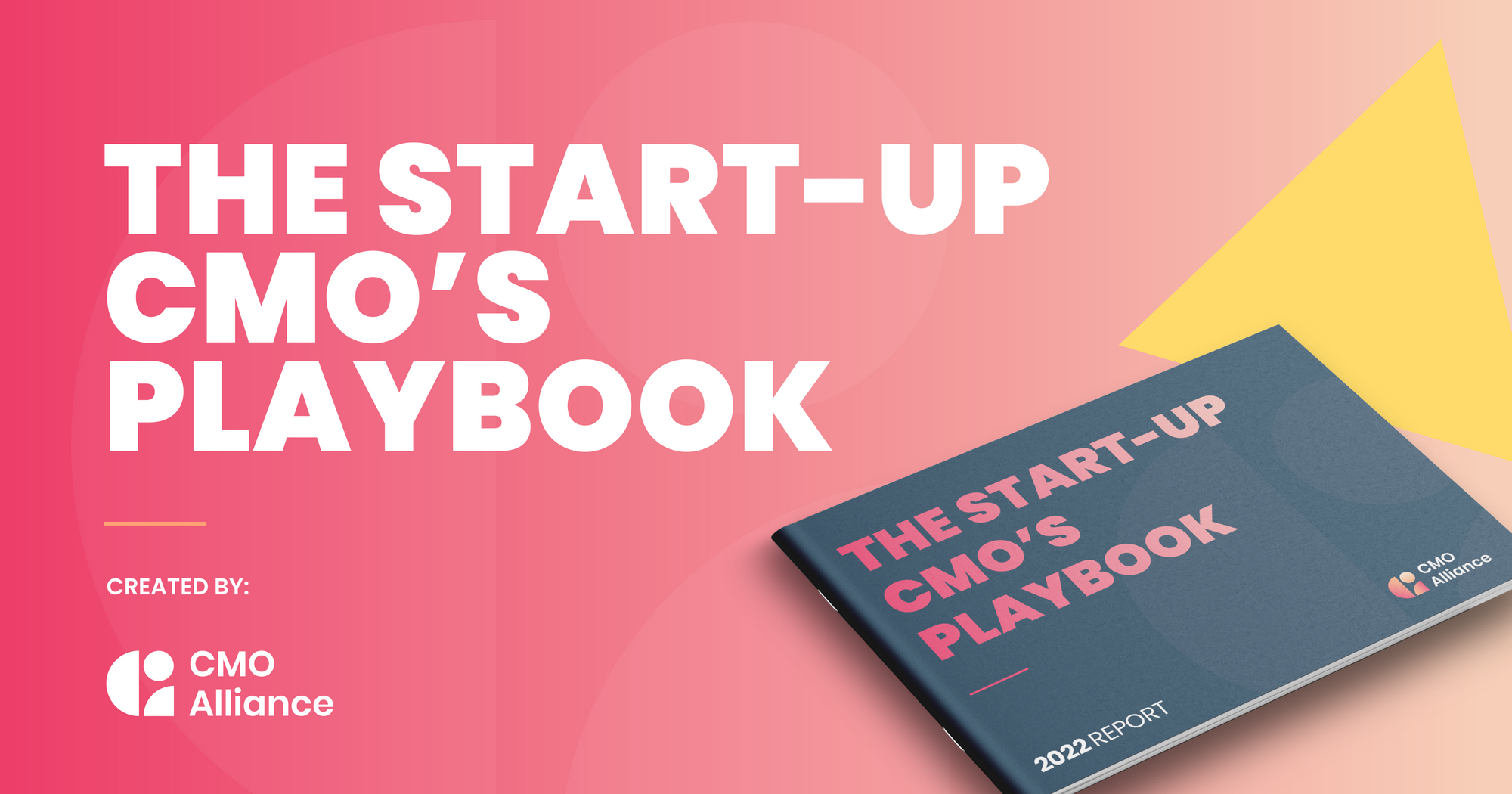a.k.a. A getting-started playbook for marketing leaders
You’ve just landed a marketing leadership role at a Series-A or -B tech company – offering a SaaS product in the B2B space.
During the interview process, you’re told how great the product is, how unique it is in the market, how it blows away the competition, and how it fills an un-yet-met-need. But, if you believe it all, be prepared to fail.
I have to openly admit to having made just about all of the missteps below at some point in my career. So, I’m sharing these personal observations from 20+ years of leading marketing, product marketing, and product management teams in a number of small (and large) Enterprise B2B software/SaaS companies. Think of this as a getting-started playbook as an early-stage hire... or for that matter, as any type of marketing leadership hire.

First: The truth about marketing early-stage B2B companies
As exciting as the concept of joining a startup absolutely is, there are common realities to deal with. A few personal observations to remember:
- They’re engineering-driven, technology-centric, and feel that marketing adds little value (“Our technology is so good, people will beat a path to our door!”)
- There is probably little-to-no formal marketing (or sales) talent
- There isn’t yet a formal product/market fit to help focus the specific niche, buyer persona, or market
- They haven’t felt the competition... or even know where it will come from because they’ve been so focused on their own technology development
Therefore, it’s very healthy to step into the company with a healthy dose of skepticism, an eyes-wide-open mentality, and a willingness to challenge the (organic) status quo – even if it’s been put forward by the CEO and even the Board.
1. Don’t believe the value prop the founders tell you.
Remember: The founders are devotees to their technology, but also may be blinded by their own ideas and beliefs about the product, the customers, and the market. In particular, engineers as founders see the beauty in the core functionality but often miss the real-world usability (and adoption) aspects of the product.
Even though you’ll be sold on the product during your initial weeks, you must assume a “Beginner’s Mind” with the product and do your own research to reach your own conclusions. Data always trumps opinions!
- Talk to customers! – Job #1 should be to discover your product’s virtues (and warts) directly from customers/users. Sit in on sales calls. Call customers directly. Be the primary voice of the customer. Keep a record of your findings.
- Research value props of adjacent companies – You must look at the alternatives/competitors and highlight adjacent products that will either vie for customer $$, and/or that you need to position against.
- Talk to analysts and others in the industry – if you’re not already familiar with the product space, seek to conduct a “listening campaign” to gauge perceptions about your product, the market, its customers, their pain points, etc. Collect this data/evidence to convey your points.
2. Don’t assume the product is complete, fully functional, or easy to sell.
While the engineers and development team will (deservedly) be very proud of their innovations, rarely is a new product release complete – and sometimes does not even meet the definition of MVP. Full product functionality means meeting all of the customers’ expectations and needs – if not fully delighting them with its value. It will be your job to determine what MVP “completeness” is... which lies solely in the eyes of the customer.
- Go through the entire buyer's journey – Do exactly what your buyer, trialer, and user need to go through to learn about, try, and use your product. Are expectations set and met? Is sign-up easy and friction-free? Are customers nurtured through the process? How long does it really take for a customer to get up and running? You have to take an outside-in perspective.
- Talk to actual users to identify feature gaps – You have to look outside the company to discover what “full functionality” really means. And that can only be determined by asking real users.
- Assess the speedbumps encountered during customer PoCs – The icing on the cake is to ask a lot about Proof-of-Concept trials with customers. That's where the most intense, detail-oriented feedback will come from, and where you can discover which features are required vs. optional.
3. Don’t (yet) focus on scaling sales... Until you achieve success with strategic sales.
This sounds counterintuitive since you were brought in to scale sales. But until you really understand customers, needs, and full functionality, you need to hand-hold a few customers through the process first. These are your critical ‘training wheel’ accounts. And they’ll also provide you with the early wins, success stories, and proof points you’ll need when finally scaling sales/marketing.
- Hand-pick your 1st customers – whether through industry connections, investors, former colleagues, etc. Putting these initial “friendly” customers through the process will teach many lessons about product, messaging, positioning, and competition.
- Early customers give you a starting point – They’re the first to help you truly quantify value, ROI, and where benefits really emerge – and may vastly differ from where you think they should emerge. And they’ll show you where the warts are, including bugs and features that are of low value.
- Early successes will give you invaluable insight into how your product plays in various industry markets or verticals, helping you narrow your focus before you invest heavily in scaling marketing + sales.
4. Don’t be frugal: Spend on marketing infrastructure, automation, instrumentation.
There are certainly areas in an early-stage startup where financial frugality and prudence make sense – but not where marketing automation and infrastructure are concerned. You have to build an infrastructure where you can scale the moment you need to – and where you can track and measure lead/customer interactions you’ll be learning from. Without this information /automation, you’ll be flying blind most of the time.
- Invest in marketing automation / CRM – you’ll need efficiency, ability to scale, and ability to measure/track. Plus, your sales counterparts will need this too. Even if you select a “lightweight” CRM tool, having the ability to track, nurture and convert customers is a critical first step.
- Instrument web and customer interactions – Tracking/measuring is useless if you can’t instrument customer interactions. Instrument your web, your emails, your downloads, and any other touchpoints. Again, without this capability, you’ll be “flying blind” and won’t get insights into what parts of your funnel work (or not)
- Instrument your product/demo – You also have to work with engineering to instrument your product and demo (if you have one). How, where, and how often customers (or trial users) interact with the product and individual features is critical. This will give you insight into the most valuable features, highlight problem areas, and also help signal “active use” by specific customers.

5. Don’t wait to hire PMM / DevRel / Tech Marketing
There will be natural pressure to spin up a demand-generation function and begin to generate excitement. But without market knowledge, technical content, and expert listening, the campaigns will be empty and poorly focused. One of the first B2B technology hires you need to make will be Product Marketing or Technical Product Marketing... if not Developer Relations as well. Without this subject-matter expertise and content expertise, your messages will fall flat.
- Hire for SME / domain expertise – You’ll need more marketing help with specific subject-matter expertise. Look for (and poach, if necessary) talent from adjacent spaces or competitors. A small company like yours needs to build bench-strength in the area
- Focus on technical content – A technical marketer and/or Developer Relations lead is also critical. If you’re selling to technologists or developers, this content is the only way to build credibility.
- Focus on Someone who understands buyers’ problems – Particularly in the technical arenas, it’s ideal if you can hire not only an SME, but one who’s previously been a practitioner. Someone who has intimately experienced the pain points that your customers feel.
Do you have any big pieces of advice on navigating early-stage B2B as a marketing leader? Maybe you've got some questions that need answering? Join the conversation with a global network of CMOs and marketing leaders on the CMO Alliance Community Slack channel.




 Follow us on LinkedIn
Follow us on LinkedIn




